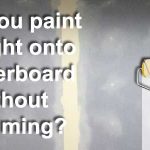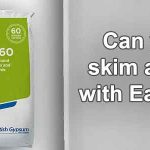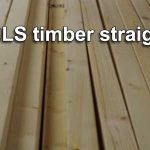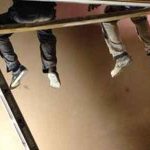Easy fill is a great all-round filler. It can be used for small patch repairs, as well as bigger jobs such as drylining plasterboards. Once the filler is dried, it can be sanded to a perfectly smooth finish and then decorated.
Prior to painting Easifill, you should remove all dust from the surface. This can be done with a soft brush or a paintbrush. Following this, you can also wipe the surface down with a damp cloth, to completely remove any remaining dust.
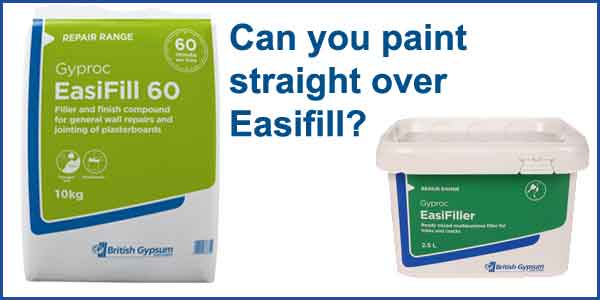
Once the surface is completely clean, you can prime the filler. This will ensure you create a nice base for the topcoats. It will also reduce suction in the filler which is very absorbent.
The most common way to prime Easifill is with a simple mist coat. This should be roughly 5 parts paint to one part water.
The way this is done, will depend on the size of the job. For example, if this is an existing wall, where you are patching small areas, you can simply apply the watered-down paint to the filled area.
If on the other hand you have been doing a big job, such as dry lining fresh plasterboard. Or even extensive repairs and filling on an existing wall. You should apply a mist coat to the entire surface. Once the mist coat is dry, you can apply two coats of normal paint to finish the job.
Why do you need a mist coat before paint on Easifill?
There are two main reason to a apply a mist coat to Easifill, the first is to reduce absorption and the second is to create a more even base for your main topcoats.
For example, if you are drylining an entire wall or even an entire room, you will be left with two surfaces:
- Plasterboard
- Easifill
If you have used tapered edge plasterboards, you will have filled all the joints and all the screw holes. Therefore, your finished surfaces will be a mixture of bare plasterboard and filler.
Both of these surfaces will have a different rate of porosity. By using a mist coat, you will even out the suction in the entire surface. This will mean your topcoat should go on much more evenly.
Without the mist coat, your Easifill and plasterboard would be absorbing the moisture in the paint at different rates. This could result in a patchy uneven finish. It could also have a detrimental effect on adhesion, which could lead to paint failures.
Easifill vs Easifiller light
If you’re doing a bigger job, such as drylining, or a lot of patching and filling, then Easifill is a great product. It comes in a powder form and can easily be mixed with water, to achieve the ideal consistency.
However, it isn’t ideal for smaller jobs, where you have a smaller amount of filling required. On smaller jobs you don’t often need an entire bag of powder, and this can lead to a lot of waste. Especially considering the Easifill will start to deteriorate if left, once the bag is open.
Therefore, if you are doing smaller repair jobs, a ready mixed version known as Easifiller light is a great alternative.
Easifiller light comes in a tub ready mixed. This alone makes it more convenient than mixing powder. It also causes less mess, and when your done you can put the lid back on and leave it for another day.
You can also paint straight onto Easifiller light. If you apply it well, and prepare it correctly, it will not flash through after two coats of paint.
It can be used on deep holes and cracks, although deeper holes do affect the drying time. However, even when filling deep holes, there is minimal shrinkage. The filler does not slump and crack, like a lot of cheaper fillers on the market.
Also, you can achieve an extremely smooth finish when applying this product. When applied flush, Easifiller requires very little sanding.
Conclusion
You can paint straight over Easifill and Easifiller light. Neither product flashes through the finished paint when used for patching and repair work.
However, a primer or mist coat is recommended prior to painting. This will ensure a better finish, and reduce suction, as the dried filler can be very absorbent.
This is especially true if you are painting drylining, as you are painting onto plasterboard and Easifill. The manufacturer recommends using Gyproc drywall primer. However, whilst this will give a very good base coat, you can achieve a similar result by applying a simple mist coat.

